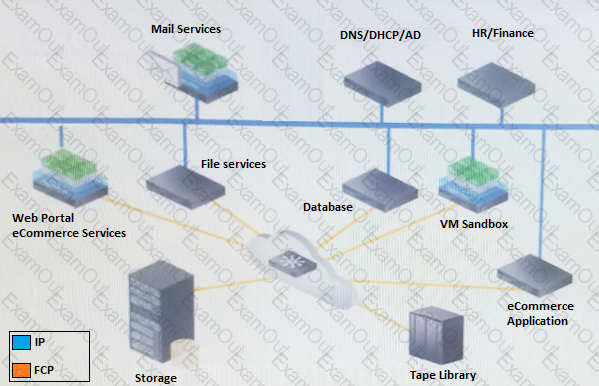A cloud design contains multiple hosts that are running a hypervisor. Each host has only two physical 10 Gb network adapters that are aggregated for bandwidth and failover. The physical switch ports for each host are configured as access ports. Each host will support numerous virtual machines and network segments. These virtual machines will communicate with other virtual machines on the same network segments.
Why would overlay networks be required for this design?
As a cloud architect designing a DIY PaaS Solution, you have concluded that using containers to support the
target application is the best choice. What consideration supports that decision?
Which authentication and authorization feature is critical for service providers when supporting multi-tenancy?
You are a cloud architect responsible for designing a multiple availability zone configuration for the
organization’s geographically dispersed clouds. You must provide the ability for services to survive a failure at the data center or site level. The primary requirement is to provide for automated site recovery.
What is a key consideration for automating the setup, failover, and recovery of services at the remote site?
A company plans to invest $315,000 to cover hardware, software, and deployment expenses. They expect to save $35,000 per month. They are using a decommissioning cost of $35,000 for the old equipment.
After how many months will the company reach the break-even point?
An organization wants to deploy a CMP solution in a private cloud. What requirements influence the sizing of the underlying cloud management infrastructure?
SPECIAL INSTRUCTIONS REMINDER
The remaining questions are associated with two cases.
Each case has an introductory, descriptive passage (case text) that describes background information and requirements for a specific cloud based design. And each case has a set of six related, randomized questions. You will need to read the case text in order to answer the related questions correctly.
Given that there are two cases with six scored questions each, the total number of case-based scored questions is 12.
When you display each questions you can easily review the related case text in a pop-up window by clicking on the “Case” icon (shown below)
Case 4
Refer to the exhibit.

Your company is currently using a traditional SAN storage network. The server infrastructure is partially virtualized. There is a public cloud in place that is used to test development and application migration to cloud.
Business requirements:
Consolidate the network, storage, and compute resources
Simplify network management and storage provisioning
Maintain application performance
Need to share resources to reduce cost and improve efficiency
Other considerations:
Monitoring of protection SLAs
All transactions must be logged for auditing review
Users are validated using internal credentials
Refer to Case 4.
You are sizing the compute capacity nodes in a hyper-converged infrastructure solution. Each node has 35 TB of storage capacity. You have calculated the total cloud storage requirement to be 700 TB.
What is the minimum number of nodes required?
SPECIAL INSTRUCTIONS REMINDER
The remaining questions are associated with two cases.
Each case has an introductory, descriptive passage (case text) that describes background information and requirements for a specific cloud based design. And each case has a set of six related, randomized questions. You will need to read the case text in order to answer the related questions correctly.
Given that there are two cases with six scored questions each, the total number of case-based scored questions is 12.
When you display each questions you can easily review the related case text in a pop-up window by clicking on the “Case” icon (shown below)
Case 4
Refer to the exhibit.

Your company is currently using a traditional SAN storage network. The server infrastructure is partially virtualized. There is a public cloud in place that is used to test development and application migration to cloud.
Business requirements:
Consolidate the network, storage, and compute resources
Simplify network management and storage provisioning
Maintain application performance
Need to share resources to reduce cost and improve efficiency
Other considerations:
Monitoring of protection SLAs
All transactions must be logged for auditing review
Users are validated using internal credentials
Refer to Case 4.
You are designing a brownfield cloud. You review the requirements and must determine the best, low-cost solution.
Which components must you include to meet the business requirements?
A company has the following requirements:
Modular building blocks
Scalability
In-house management solution
No physical SAN
What type of infrastructure would meet these requirements?
Which properties define a cloud environment?

